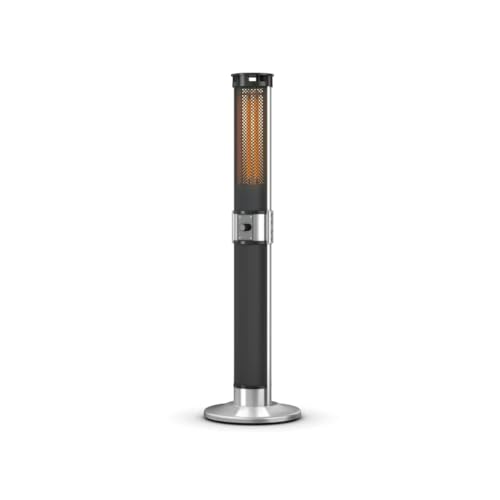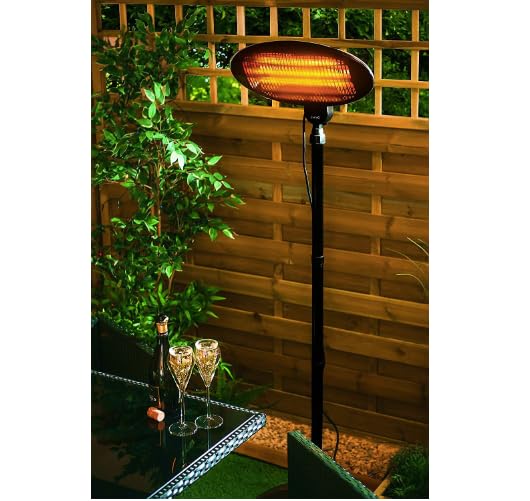
Natural Gas Patio Heater
A natural gas patio heat is an excellent option to keep
outdoor gas patio heater areas warm. Its main benefit is that it can be connected to existing natural gas lines (NG), so you don't have to worry about refilling your propane tanks.
There are several factors to take into consideration before deciding on a. This article will examine the different choices, including heat output and safety, as well as installation.
Cost
A natural
gas patio heater can help you make the most of your outdoor space into the night. These heaters are available in different sizes and can be mounted on walls freestanding, or attached to the post. The best model should include features that make patio use safer and more convenient. You can find models with an anti-slant feature that will shut off the stove whenever it tilts more than 47 degrees. Some models are also made of durable materials such as aluminum and stainless steel for strength and corrosion resistance.
They can be powered by electricity, propane or natural gas and produce up to 46,000 British Thermal Units (BTUs). Electric models are plugged into 120-volt outlets that are the most simple to set up and operate but they don't provide heat as well as propane or natural gas ones.
Propane patio heaters are tall and umbrellalike and usually have hollow bases that hold 20-pound liquid propane tanks similar to the ones you'd use to fuel a gas grill. The tanks are cheaper than the fuel used in an indoor space heater, but they require refills frequently and they can't be moved as easily. There are also smaller propane heaters for tables designed to sit on tabletops and hold propane tanks that are camp-style.
The cost of a natural gas patio heater is determined by its size and features, such as wheels for mobility along with a quick ignition, as well as a remote that can be set to different settings. You can choose from a variety of finishes to match your outdoor decor, including the hammered brass, resin wicker and decorative stone facing.
Natural-gas and electric patio heaters require professional installation. They aren't movable easily like propane and gas versions. However, they appear more durable and function as well as a space heater. You can choose a sleek model that threads through gas lines that are rigid to add an extra stylish appearance. However, the cost of a natural-gas patio heater is typically higher than those that run on propane or electricity.
Heat Output
Be aware of the output of heat from natural-gas patio heaters when shopping. The amount of BTUs it produces is an indication of how warm it will make your guests and also how many hours it can keep your patio or balcony cozy. The more BTUs, the larger your area can be heated.
Whether your outdoor area is covered or open, gas patio heaters can help you comfortably enjoy the outdoors year-round. The majority of models are adjustable and are powered by propane or natural gas. They can be installed free-standing or mounted on the ceiling or wall. When floor space is limited, choose a portable natural gas patio heater with wheels that utilizes propane tanks that are readily available to provide power to the burner. Look for features like a gas shutoff to prevent leaks in the event of a flame burning out, or an anti-tilt feature that stops the supply of fuel automatically when the unit tilts over 47 degrees.
The best natural gas patio heaters provide ample warmth for your patio or deck without taking up much space. The huge freestanding models that look like floor lamps, offer radiant warmth to a larger area and are made of durable metal. Tabletop models that have a
small gas patio heater footprint work well in dining rooms with small spaces. You can find models that run on propane or natural gas and come in a variety of attractive finishes.
You can also find propane and natural gas patio heaters that have a cast bronze, resin wicker or decorative stone face for an upscale appearance. Look for features like an electric starter button, a safety valve that automatically shuts off when the unit is tipped over, and rotary dial controls to easily adjust and set the flame. Some of the top patio heaters for propane are made from stainless steel to ensure durability and strength, whereas others are constructed of aluminum for lighter weight.
Safety
Gas patio heaters are a popular way to extend the time you spend in your outdoor space. The gas patio heaters are available in a variety of styles, from those that stand by themselves and utilize a propane tank to others that connect to the gas line in your home. The kind you pick depends on your budget and the amount you're looking to heat your space.
Propane-fueled units are typically a stand or pole with a reflector dome or shield, and a base that is able to hold the 20-pound propane (LP) tank. They are available in a range of power outputs ranging from 41,000 BTUs to more than 100,000. They come with security features like an automatic shut-off valve, and an electronic lighter that make it easy to ignite. They also have a tip-over switch which automatically shuts off the flow of gas when the unit tips over.
Portable LP patio heaters are only to be used outdoors on flat, non-combustible, non-slip surfaces. They must be kept at least three feet from any combustible material and at a minimum of 12 inches away from any object that can catch fire, such as fences and trees. The fuel cylinder should be kept outside and at least three feet away from any building, stairways, windows and doors. Check the hoses and connections of a propane patio heater for leaks frequently. You can test these connections by using soapy water. Look for the UL or CSA marks on a patio heater constructed of propane to ensure it meets national safety standards.
A
natural gas gas patio heater is connected to the natural gas line in your home and offers more BTU than propane heaters. It's more expensive to run, however it's safer and doesn't need a replacement propane tank. These units are ideal for residential patios, restaurant patios, and common areas in condominium and apartment buildings.
No matter which style of patio heater you select, you should make sure it is rated for indoor or open-air use. If natural gas or propane patio heaters are used in a closed space, they can release dangerous carbon monoxide. Electric patio heaters on the contrary, do not emit any harmful pollutant and can be utilized in a sealed area.
Installation
Natural gas patio heaters connect to the gas line of your home. They don't need a propane tank, like other kinds of outdoor heating. This makes them a more practical and safe alternative to traditional propane heaters. Additionally, they don't emit more smoke than propane heaters do. However, they will require professional installation and are higher costs than propane heaters.
These heaters are popular for both residential and commercial buildings. They can make your patio more comfortable even when temperatures fall below freezing. They are safe to use as they don't emit heat at the surface of the heater, but instead radiate heat from inside the hood that is silvered. These heaters are very energy efficient since they don't consume lots of energy.
Patio heaters are available in two varieties: wall-mounted and freestanding. If wall-mounted, they must be placed at least 8 feet above the ground to ensure that people are not within the path of radiant heat. Freestanding heaters require an absolute clearance of 14 feet in order to prevent the spread of combustible substances in the area.
These heaters have built-in safety features that safeguard people and property in the event of an issue. For instance, many include a tilt shut-off device that will stop the heater from using power (whether it's electricity or fuel) when it accidentally tilts or falls over. There is also sensors that detect flame to prevent accidental ignition.
To ensure that the gas heaters are safe for use in the home, a licensed plumber should be employed to install them. They must be acquainted with the local and state plumbing codes and heating codes to ensure that gas lines are constructed correctly for the heaters. They should also be certified to inspect gas appliances for leaks.
Other expenses may be additional to the materials and labor costs of the gas patio heater install. These could include the removal or replacing any damaged structures or finishes. These costs include framing, finishing of surfaces, as well as plumbing systems. These costs could also comprise upgrading existing systems to meet current building codes. These costs should be included as part of the overall estimate.


 Natural Gas Patio Heater
Natural Gas Patio Heater